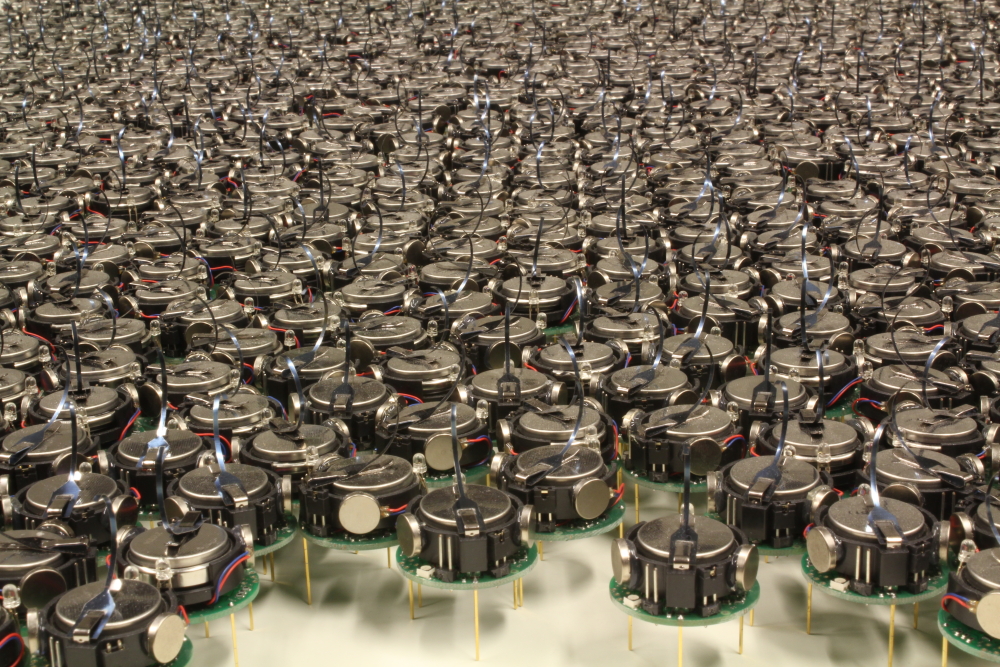[ot-caption title=”Pictured above is Kilobot, a one thousand-strong robot ‘swarm’ designed by Harvard scientists whose movements display a high degree of synchronicity. (via, Asuscreative/Wikimedia Commons)”]
This contemporary era is one of excitement and wide-scale appeal for those who are interested in the world of robotics. With overall increases in technological specialization and interest in methodologies of innovation, a variety of tools have become available to the general public that were figures of the imagination only a few decades ago. Several months ahead of the 2016 International Conference on Robotics and Automation organized by the IEEE Robotics and Automation Society, countless laboratories from all over the world have generated robots that retain a unique and rather fascinating set of distinguishing properties.
Created by researchers at MIT, the now-famous origami robot is one of the most interesting and innovative robots to be displayed so far this year. This robot is constructed of a magnet, PVC, and structural layers of either cellulose or polystyrene; in addition, it is also extremely small, measuring 1.7 centimeters on one side and having a mass of only 0.31 grams. As its name implies, the origami robot can fold itself into a variety of different shapes by utilizing a cubic neodymium magnet and several electromagnetic coils that produce a magnetic field, operating as a motor. A final, very convenient, aspect of this robot is that all of its components, except for the magnet, can dissolve in acetone. The scientists claim that they will soon be able to create a fully autonomous self-folding robot that will be able to dissolve in water. This would be extremely useful in translational medicine and countless other fields.
In the same category of miniature scale robotics, one can encounter Harvard’s robotic bees that have been in the works for quite some time. These robot bees weigh approximately 0.01 grams and (even though they need to be tethered for power) can hover autonomously in the same manner as organic bees. These robots are of particular interest because they are able to successfully maneuver through media of land, water, and air, a feat that is rarely achieved by many comparable products. The RoboBee accomplishes its airplane and submarine-like status by flapping its wings at 120 Hertz in air and at only around 9 Hertz in water.
Another robotic creation has been developed by a crafty team of researchers working at ETH Zurich’s Autonomous Systems Lab. This group took an already impressive walking robot and paired it with a flying drone in order to improve its capabilities for navigating through intricate terrain. First, the UAV, or unmanned aerial vehicle, flies ahead equipped with a camera and a map of all nearby landmarks. In terms of walking, the robot posses the ability to make each step property balanced, overcoming a daunting challenge posed by uneven pathways.
All in all, these three separate methods of tackling issues associated with robotics offer an exciting insight into the potential development of future and even more advanced robotics technology!
Sources: Engadget, ICRA 2016, IEEE Spectrum, Asuscreative
































![Stranger Things 4: What to Expect [Warning: Contains Spoilers]](https://pcpawprint.com/wp-content/uploads/2021/11/StrangerThings4-900x473.jpeg)







































































